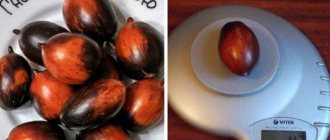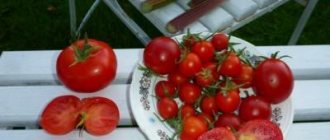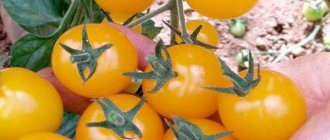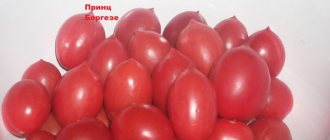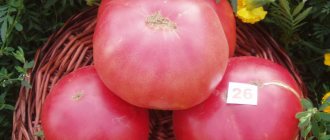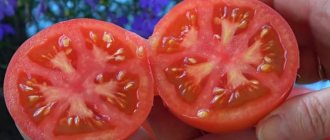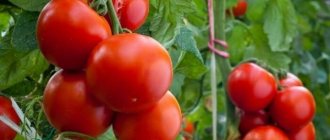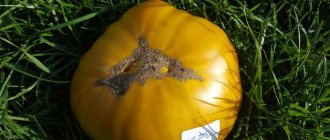Recently, balcony tomato seeds began to appear on sale. This is the name of varieties intended for growing on open loggias and balconies. Pygmy is one of these cultivars. It appeared thanks to the efforts of domestic specialists.
| Height | Landing location | Ripening time | Fruit color | Fruit size | Origin | Fruit shape |
| short | Open ground | Ultra early | Reds | Small | Variety | Round |
Description and characteristics of the variety
Pygmy is an indoor tomato obtained in agro (Moscow). The variety is included in the State Register. Year of registration: 2008. Pygmy can be grown in all regions in private farms.
The Pygmy tomato is cultivated on the balcony by people who do not have land. In fact, it is intended for open ground and temporary film structures.
The variety fully lives up to its name - the height of the plant does not reach 40 cm. The bush is standard and does not need staking. The leaves are small, dark green. Brushes begin to form after the fifth leaf. The ovaries are collected in groups of 5 or more.
The fruits are universal, suitable for salads, pickling and whole-fruit canning. The shape is round, the surface is smooth, there are no ribs. Medium density pulp. When ripe, the fruits are bright scarlet. There are not many nests, but the taste is very good. Average weight 25 g.
Ripening is very early. The fruits can be harvested 85-90 days after germination.
Cons of dwarf tomatoes
1. The main disadvantage is that it takes up precious space on the windowsill for seedlings. Of course, from one compact bush you will not get a large harvest, as from indeterminate tomatoes, and a dwarf seedling will take up as much space as a tall one. 2. Re-grading often happens. The same Pygmy I and other members of the forum came across was not dwarf, but tall. However, this happens not only with compact tomatoes. 3. To taste, all dwarf varieties are ordinary, sweet and sour. No sugariness, no dense pulp. These are just ordinary small tomatoes, nothing more.
However, the taste and color, as you know... Many siblings have their favorites among dwarf tomatoes and plant them from year to year.
Advantages and disadvantages
Pros:
- a small compact bush allows you to save space in the garden bed and loggia;
- has not only nutritional, but also decorative value;
- can be used as a compactor for tall tomatoes;
- does not require pinching or gartering;
- good taste;
- early ripeness;
- does not crack;
- resistant to late blight;
- can be planted in pots, hanging containers, make a border around the bed or along the path;
- the skin is dense, so it tolerates transportation well by any type of transport;
- Suitable for decorating dishes.
Minuses:
- low yield per unit area due to the small size of the bush and fruits;
- in rainy summers the fruits turn sour.
Advantages of dwarf tomatoes
1. Seedlings of dwarf tomato varieties do not outgrow. Therefore, for growing on a windowsill, they can be safely sown almost at the end of the summer season. I have had experience growing Florida Petite since September. We picked our first red tomatoes in mid-May. I grew it like ordinary seedlings. They grew very slowly. I didn’t even light them up, I just transplanted them a couple of times from small containers to larger ones. At first there were 0.2 liter glasses, then 0.5, and at the beginning of March I transplanted them into cut-off five-liter bottles. They grew on the western window.
Florida is beautiful in mid-May. Nadya Photos
So for those who really miss their dacha in winter, growing dwarf tomatoes will bring not only pleasant worries, but also small tomatoes.
Seedlings of Pinocchio, Pygmy, Balcony Duet varieties in May. Sowing February. Nadya Photos
2. These tomatoes are ultra-early ripening, especially when planted in traditional times - in March or April. I usually sow dwarfs in mid-February, along with peppers and eggplants. In the greenhouse, by the end of June, the fruits ripen to biological ripeness, and you can begin to make the first preparations of tomatoes and cucumbers.
Assorted Pinocchio variety. Asbuka Photos
3. Dwarf tomatoes can be used for compaction in greenhouses, planted even in corners so that the land does not go to waste - the economic benefit from the greenhouse increases!
A pygmy behind tall tomatoes, almost against the wall of the greenhouse, a place with little light. Nadya Photos
4. The fruiting period of dwarf tomatoes is extended.
Pygmy, for example, bore fruit for me until mid-September. Nadya Photos
Photo by Kuzya74 from January: “The Balcony Miracle variety is growing for the second year.”
5. Dwarf tomatoes can be grown on windowsills and balconies.
Tatula advises: “Directly under the window on the street side, you can plant 8 tomato bushes in a solid box! And if you want, then 12 (about every 1 bush, plant 2 bushes in a hole).”
Scheme from Tatul.
6. The size of the fruits of dwarf tomatoes is excellent for whole-fruit canning. To prevent tomatoes from cracking in the brine, they must be pierced with a toothpick in the area of the stalk.
Pygmy is the size of a strawberry. Nadya Photos
Review of tomato varieties for growing in an apartment
Tomatoes appeared in the European diet not so long ago - about 400 years ago.
And before that, for almost a hundred years, the plants were considered purely ornamental, and the fruits were poisonous. The Spaniards brought tomatoes when they conquered South America. Apparently, someone tried unripe tomatoes and got poisoned. Indeed, green tomatoes cannot be eaten raw due to the high content of the poison solanine. This led to the fact that tomato bushes were grown in gardens for beauty.
Today, more than 4,000 officially registered varieties have been bred, approximately 5,000 more are amateur selections, and the number of hybrids has already exceeded 20 thousand. Conventionally, all varieties can be divided into three groups - for open ground, for growing in greenhouses and indoor tomatoes. We will talk about the latter in detail.
Ask and receive useful advice from professional gardeners and experienced summer residents.>>
Features of indoor tomatoes
The group of tomato varieties suitable for growing on a windowsill, balcony or terrace includes several types:
- dwarf tomatoes;
- tall tomatoes;
- ampelous types (hanging);
- decorative varieties of potted tomatoes, which, however, produce some harvest of tasty sweet fruits.
The fruits are quite large in size - about the size of an apple, but the most popular indoor tomatoes are cherry and cocktail varieties.
By color, varieties of dwarf tomatoes are red, pink, yellow, white, chocolate and black, green and multi-colored.
All varieties of tomatoes for the windowsill meet the following requirements:
- be self-pollinating (there are no pollinating insects in the house);
- standard, that is, do not require pinching and shaping of bushes;
- adapted to short-day conditions, especially in winter;
- bushes are small in size;
- with early harvest, but extended over time.
- resistant to dry air and fungal diseases.
What varieties of tomatoes can be grown on a windowsill in pots?
The answer is clear: these are self-pollinating indoor tomatoes with a compact bush shape.
You should not take tall varieties for planting at home, and it’s not just the large size of the plants themselves. For full fruiting and ripening of fruits, they also need a certain volume of soil - a container no smaller than a bucket. It is problematic to keep such tomatoes at home in a standard flower pot, and the harvest will be minimal.
We present a short review with descriptions and photos of the most successful varieties of indoor tomatoes that can be grown on a windowsill all year round.
Indoor mini tomatoes of American selection
Among the numerous varieties, our vegetable growers recognize Florida Petit, Minibell and Tiny Tim as the most successful. All of them have a compact bush 20-30 cm high, fruits are bright red, early ripening (80-90 days after germination), quite productive - one plant for 2-3 weeks can produce up to 0.6-1 kg of sweet fruits. tomato In the first two varieties they are small, the size of a walnut, and Tiny Tim produces indoor tomatoes as large as an apple.
The first flowers appear above the 5-6th leaf, another inflorescence appears 1 leaf higher. Then the bush stops growing in height and forms numerous lateral shoots. There is no need to do any shaping.
Another undoubted advantage is that additional lighting is not needed - even natural light on a winter window ensures the ripening of fruits.
Dwarf varieties of domestic selection
These productive varieties for window sills and balconies can be called practically problem-free: Zhemchuzhinka, Bonsai, Angelica. They are also low - up to 30 cm. The fruits are small, but there are a lot of them - the bushes are literally covered with red tomatoes, and in Zhemchuzhinka they have a rich crimson color and a plum-shaped shape.
Balcony miracle is one of the most popular and productive indoor varieties, growing both on the windowsill and in flowerpots and boxes on the balcony. Breeders have bred varieties of this variety with red, orange, yellow, pink and chocolate fruits.
The bush can grow up to 0.5 m, it is compact, with numerous branches, but requires garter. Fruiting is early, spread over 1 month. In total, you can harvest up to 2 kg of excellent tomatoes from one plant. Very tasty, sweet fruits come in different sizes - from small peas to the volume of a tennis ball.
The best varieties of tomatoes to grow at home in winter are Florida Petite, Bonsai and Balcony Miracle.
The Room Surprise variety looks very decorative. With good care, it produces so many cute elongated fruits that the bush appears red rather than green. This variety can be grown on a garter and in an ampelous form.
The smallest variety today is considered Mikron NK, 15-20 cm tall, the berries are red and yellow, weighing 10-12 g, there are a lot of them, in total - up to 1 kg from such a small bush!
Also pay attention to the varieties Cherry Yasik, Balcony Yellow, Skorospel, Mirabel, Pierretta 225, Craiova, Boni-M. They can also be grown in open ground in garden beds.
Ampel varieties
Bushes with hanging clusters of small fruits are very beautiful, especially in hanging flowerpots and will decorate the interior and balcony.
The most productive among the hanging varieties is Pinocchio. The length of the vines is up to 30 cm; at the same time, up to 1.5 kg of red, uniformly sized tomatoes weighing about 20 g ripen.
Pygmy is another stunning variety that does not require special care, with a guaranteed yield of almost 2 kg of red fruits weighing 25 g. The bush looks like a green ball covered with red peas.
Another ampelous variety is the dwarf form of the amazing Honey Bunch variety. It is distinguished by very large clusters of 20-30 yellow-orange plum-shaped tomatoes. This is the most delicious variety of all indoor varieties. It is also grown in garden beds.
The cascade variety Tumbler is preferably grown in hanging flowerpots or balcony boxes. Productivity up to 2 kg of red, very tasty fruits. Demanding on lighting.
These were the best varieties of dwarf and ampelous tomatoes for home cultivation. From them you can collect your seeds for the next stage of cultivation.
There are even more hybrids - City dweller F1, Cherry fingers F1, Red abundance F1, Slastena F1, Arctic cherry F1 and others. Their seeds do not retain their original qualities the following year. But stepsoning allows you to preserve the variety. At the end of fruiting, you need to take the healthiest stepson that did not bear fruit, root it in water and grow it as a full-fledged new bush.
Low growing tomato varieties
On windows in a warm house and on balconies from May to September, when the ambient temperature at night reaches +15 degrees, you can also grow low-growing (standard) varieties intended for open ground. There are no special differences in agricultural technology between dwarf and standard tomatoes.
Collection, storage and use of crops
Only fully ripe tomatoes are harvested. Otherwise, the gardener will not feel the delicate sweet taste of cherry tomatoes. The harvest should be stored in the refrigerator. The advantage of the culture is that most cherry tomatoes (for example, the Ira variety) retain their taste even after freezing. The same cannot be said about large tomatoes, which crack in such situations.
Cherry tomatoes are used in salads
Given the low calorie content of the product, cherry tomatoes are actively used in the preparation of salads and snacks. In addition, miniature fruits are used to decorate dishes, used in home canning, dried and dried.
Housewives often close a unique assortment for the winter - small tomatoes with large ones. In this case, the maximum filling of the jar occurs.
Cherry tomatoes have filled supermarket shelves and our refrigerators. This is due to the taste of the product and the long shelf life of the fruit. In addition, many gardeners grow miniature fruits in their garden beds. New varieties developed by breeders make it possible to obtain a bountiful cherry harvest even in northern regions with harsh climates.
Gradation of cherry tomatoes
The large family of cherry tomatoes can be divided into several categories.
Similar to their large-sized counterparts, depending on their height, they are usually divided into:
- Dety (low-growing or determinate varieties);
- Semi-children (medium-growing or semi-determinate varieties);
- Indets (tall or indeterminate varieties).
In the group of low-growing cherry varieties, the so-called superdeets are distinguished. Plants included in this category do not grow higher than 30-40 cm. Often these specimens are the most preferable for growing in pots placed on window sills and boxes placed on balconies.
In English, the word “cherry” means nothing more than a cherry. Depending on the size of the fruit, small-fruited varieties of tomatoes are divided into cocktail and cherry tomatoes. The former are characterized by fruits weighing 40-50 g. For the latter, this figure does not exceed 10-30 g.
Breeders never tire of developing new varieties of cherry tomatoes. Hybrid varieties are usually labeled with the abbreviation F1.
Amateur gardeners should remember the futility of collecting seeds of hybrid tomatoes that do not retain the parental characteristics.
You can purchase the seeds you like at specialized seed sales points. You can also place an order on the pages of the corresponding online stores. When purchasing a cherry tomato variety, you can limit yourself to choosing the most attractive fruit in order to remove the seeds and their further planting.
The abundance of cherry varieties on the market is amazing. The majority of seed companies operating in this area are ready to offer consumers several varieties of small-fruited tomatoes.
At the stage of choosing a suitable seed, it is advisable to study the advantages of the variety you like, taking into account the place where it is grown (greenhouse, balcony, garden plot). You are welcome to familiarize yourself with the recommendations on agricultural technology.
Tall varieties are bred for greenhouse cultivation. The marks “for loggia” and “for balcony” indicate that the variety can be used for home cultivation.
The time spent at this stage will not be wasted. As practice shows, it is not possible to provide tall cherry tomatoes with sufficient food and light in apartment conditions.
Planting black currants
Black currants like to receive a lot of sun, that is, light and warmth, so set aside a corner for it in the southern or southwestern part of the garden. Make sure that the soil acidity is low, as this crop does not like to grow in other conditions. Do liming to be on the safe side, just in case. About 200–250 g of lime powder are scattered per square meter for digging. On highly acidified soils, the application rate can reach 600–700 g.
Time and landing pattern
There are two periods in the season for planting Pygmy currants: the first is in April-May, the second in September-October. It is preferable to plant the plant in the fall, and so that it has time to take root before the onset of cold weather. In the spring, melt water will significantly compact the soil around the roots, and they will begin to grow even more actively.
Plant black currants in a place open to the sun, but so that the tree trunk is protected from direct sunlight
Pygmy bushes are quite compact, so when planting, you can leave 1.5–2 meters between them so that they receive sufficient light and ventilation. Try to arrange the plants in such a way that the tree trunks under them are protected from direct sunlight.
Selection of planting material
Actually, a seedling in a container is an excellent purchase that can save you a lot of trouble. However, such a purchase will cost more than a seedling with an open root system. It is much easier to purchase the latter, because in spring and autumn it is sold everywhere: at bazaars, in shops and ordinary private shops. The most reliable way to buy a plant is not from hand, but from trusted nurseries or stores. The closer such a place is to your site, the better.
Buy seedlings from trusted nurseries that value their reputation and sell only quality products
Choosing a healthy seedling is not difficult. Its roots should be elastic and moist (if they are exposed), and light green or white fibers should be visible under the bark when lightly cut. Try not to purchase plants with obvious damage, signs of disease or dry roots.
Gardeners often take one bush of one variety or another for testing, but in reality it is better to purchase two or three specimens to get a larger harvest from each of them.
Carefully inspect the blackcurrant seedling before purchasing: its roots should be elastic and moisturized, and the presence of leaves will only confirm the good condition of the plant
Landing
Planting black currants is not as difficult as it might seem, but it still requires compliance with certain conditions.
- At the selected location, carefully dig up the soil, remove all weeds and plant debris.
- Dig a hole for a seedling 50–60 cm in diameter and up to 40 cm in depth. The top fertile layer is removed and set aside.
- A nutrient mixture consisting of a bucket of compost, 200 g of superphosphate and 50–60 g of potassium sulfate is placed in the pit. All these ingredients are mixed with infertile soil.
- The roots of the seedling are dipped in clay mash, which is obtained by diluting the clay to a semi-liquid state in water.
- The seedling is placed vertically or at an angle so that in the future it can grow more branches.
- Currant roots are sprinkled with fertile soil, with the root collar being 5 cm below the zero level.
- After planting, all shoots are pruned so that no more than three healthy buds remain on each to stimulate active growth.
- A small depression is made around the seedling for watering. One bush requires about 7 liters of water.
- After watering, the tree trunk circle is mulched with peat, humus or sawdust to better retain moisture in the roots.
A seedling in a container will take root much faster in a new location and can be planted throughout the season.
Rules of care
Caring for indoor tomatoes is quite simple, but it is recommended to adhere to the rules of agricultural technology, which are prescribed by the peculiarities of this type of vegetable cultivation.
Watering and fertilizing
Indoor tomatoes are very responsive to watering, which has a positive effect on the formation of ovaries, as well as the filling and ripening of fruits. The soil should be constantly moist, without deep drying, which often provokes dropping of fruits. However, excessive waterlogging can cause many tomato diseases.
To increase the immunity of a houseplant, as well as provide it with the amount of nutrients necessary for growth and development, fertilizers should be applied twice a month. Fertilizing indoor tomatoes is carried out using special fertilizers for vegetable crops. The use of nitroammophosphate and superphosphates or the use of complex fertilizer “Sudarushka-Tomato” also shows good results.
Additional lighting
Despite the fact that many new varieties intended for indoor growing have increased resistance to insufficient lighting and are capable of producing a crop even with a small amount of it, additional illumination with special lamps allows not only to increase the yield, but also to extend the fruiting period.
Tying and pinching
A limited number of varieties suitable for cultivation under indoor conditions require pinching, bush formation and tying. Most often, these shade-tolerant plants are low-growing, single-stemmed and grow well without staking or support. At the same time, low varieties of tomatoes are capable of producing about 1.5-2 kg of ripe fruits from each bush.
How to collect tomato seeds at home
Self-harvested tomato seeds have the advantage of good germination rates and allow you to obtain very strong seedlings that are resistant to various diseases. In addition, tomatoes grown from their own seeds have greater productivity and high yield.
The resulting seed material should be washed several times with clean warm water, and then dried on gauze or on fabrics that absorb water well. After complete drying, the seeds are packaged in envelopes, which should be signed and stored at room conditions, but not more than five years. It should be remembered that hybrid tomatoes are not suitable for harvesting seeds.
Disease Prevention
To protect indoor tomato bushes from damage by the most common diseases and pests, preventive spraying should be carried out with the following preparations:
- against late blight, spraying with “Quadris”, “Ridomil-gold” and the drug “Bravo” is used;
- to protect against anthracnose, use “Quadris” or “Tiovit-jet”;
- “Strobi” and “Fitolavin-300” show high effectiveness against spotting.
Features of cultivation, planting and care
We recommend sowing the seeds of this tomato for seedlings 55-60 days before the intended planting in the ground. Seedlings dive at the stage of two or three true leaves. When planting seedlings in a permanent place per 1 sq. meter there are 4-6 plants.
Further care for tomatoes consists of timely watering, fertilizing with complex mineral fertilizer, pinching and preventive measures to protect against diseases and pests.
For other interesting varieties with photos, descriptions and reviews, see our Tomato Catalog alphabetically. Enjoy watching!
Advantages of the Pink Bush hybrid: early fruiting, fruits of good commercial quality.
Originator: SAKATA (Japan).
Formation of low-growing tomatoes, tying and protection from diseases on video
If you grew Pink Bush tomatoes, please write what the yield was and what the taste of the fruit was, will you grow this hybrid again and would you recommend it to others? How do you rate the disease resistance of this tomato? Briefly describe the advantages and disadvantages of this hybrid. If possible, attach a photo of these tomatoes to your comment. Thank you!
Your reviews of the Pink Bush tomato and additions to the description will help many gardeners evaluate this hybrid more objectively and decide whether it is worth planting or not.
Tomatoes for protected soil
- Benito F1
When choosing productive seeds, we especially recommend paying attention to the well-proven Benito hybrid. It was bred by breeders from the Bejo Zaden company and has a medium-early ripening period.
Tomatoes are creamy, dense, tasty, weighing 50-100 grams. It is recommended to leave the fruits to ripen on the bush, then they have a richer taste. Used for all types of preservation, suitable for marinades and pickling.
From one square meter of low-growing plants, you can harvest up to 22-25 kg of tomatoes.
- Grouse
Indeed, the color of the fruits of this tomato is pockmarked, with numerous yellow strokes and stripes on a red background.
The variety has a medium ripening period, is low-growing (60 cm), and is unpretentious. Usually only the lower stepsons of a bush are removed; gartering is needed during the harvest period.
The tomatoes are very sweet, weighing 250-300 grams, round in shape. Thanks to their thick skin, they are not prone to cracking.
- El Dorado
This variety has bright, lemon-yellow fruits and a very good taste.
The ripening period is 110-115 days, the bushes are powerful, about 80-90 cm high. Partial pinching of a low-growing bush is recommended; installation of supports and garter is required to support branches with ripening tomatoes.
About 5 racemes appear on each plant. The fruits are large, heart-shaped, weighing 350-400 grams. Purpose: salad.
- Ob domes F1
An interesting variety with fruits that resemble persimmons in appearance. The bush reaches a height of no more than 50 cm; it is better to grow such a tomato in a shelter.
Tomatoes are bright crimson in color, juicy, fleshy, weighing up to 250 grams. Most often used for fresh consumption, for salads, making juice, tomato puree, and ketchup.
The hybrid is fertile, and its resistance to temperature changes, cold, and heat is noted. It is distinguished by friendly harvest yield even in an unfavorable season.
- Peach
The short, large-fruited Peach will surprise you with its original tomatoes of a beautiful cream color with slight pubescence. Weight – 90-100 grams, taste – excellent, there is a fruity note.
The bushes in the greenhouse grow up to 50-60 cm; there is no need to remove the shoots. The variety is very productive; up to 7-8 kg of tomatoes can be harvested from one square meter.
The variety is valued for its unusual fruit color, early harvest, and high commercial characteristics.
- Sultan F1
Up to 14-15 kg per square meter can be harvested from the bushes of this productive hybrid. The Sultan tomato belongs to the group of mid-early tomatoes; the height of the bush reaches half a meter.
Like many greenhouse varieties of the low-growing group, it can be grown without pinching; a garter is needed for clusters with fruits. Tomatoes weigh about 150 grams, fleshy, round, with slight ribbing, good taste. The color of the fruit is bright red.
Sultan was bred in Holland; currently the seeds are produced by various Russian manufacturers.
- The Velvet season
The bush grows in greenhouses up to a meter, when cultivated in open ground - no more than 60 cm.
Tomatoes ripen in 100 days, the fruits are round in shape, weighing up to 300 grams. The pulp has a very pleasant sweet taste, sugary. Tomatoes are mainly used for salads.
ON A NOTE! The bush of this tomato is distinguished by a high degree of foliage.
- Orange Princess
For lovers of orange tomatoes, we recommend this productive variety, which also stands out for its early ripening.
The first tomatoes can be picked after 90 days (technical ripeness). The fruits are dense, elongated, very juicy.
Use – salads, canning, pickling. In various preparations, the taste of the fruit is especially pronounced. Productivity – 10-15 kg per bush.
- Biathlon F1
A tomato with a “sporting” name begins to produce a harvest within 90-95 days. The bush is low-growing, needs to remove stepsons, as well as a garter.
Tomatoes are dense and have a pronounced tomato taste. Fruit weight is 70-100 grams. Tomatoes are intended for processing, preservation, and fresh consumption.
